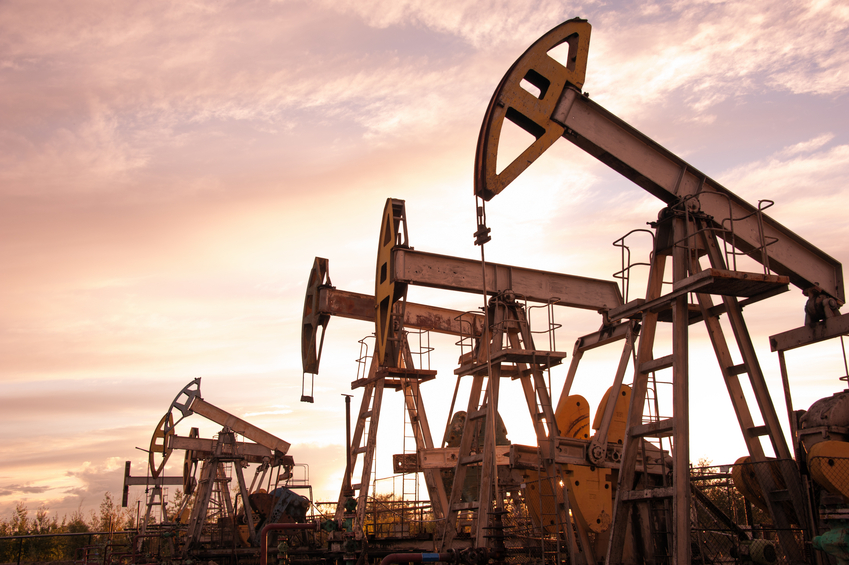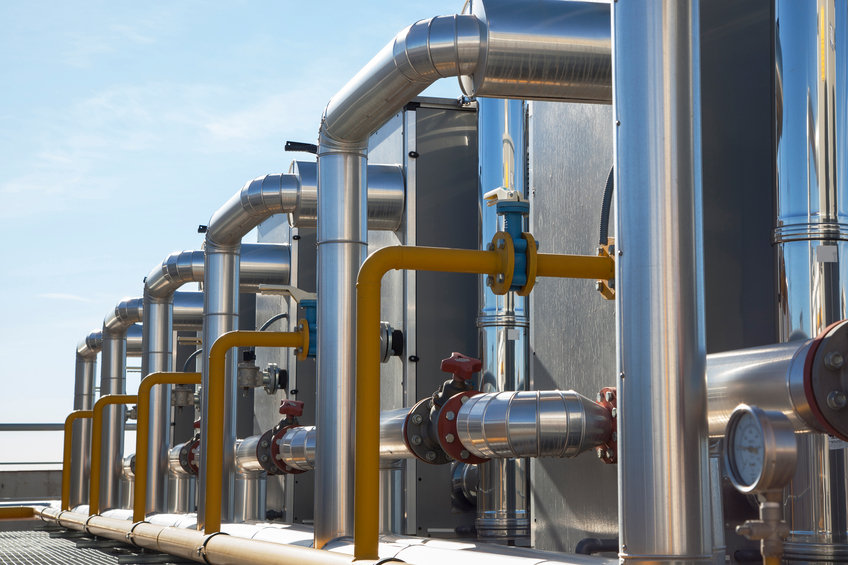Ontario Petroleum 15 PDH Discount Package
HVAC Design for Oil and Gas Facilities (M04-014)
Petroleum Reservoir Rock and Fluid Properties (P05-001)
Petroleum Economics (P04-004)

This online engineering PDH course provides information on how to analyze natural gas composition data to determine specific gravity, molecular weight, critical temperature, critical pressure, heating content, liquid yield, and shrinkage.
Due to the structure of its hydrocarbon components, natural gas deviates from the Ideal Gas Law and must be modified using the gas compressibility factor. Additionally, as natural gas is brought to the surface, certain components may liquify and cause operational issues. The properties determined from the analysis of natural gas composition are needed for calculation of the gas compressibility factor, behavior of gas at reservoir and surface flow rates, the estimation of condensate and natural gas liquid yields, and gas processing requirements.
This 2 PDH online course is applicable to petroleum, chemical, and geological engineers who are involved with the production and distribution of natural gas and natural gas liquids.
This P.Eng. continuing education course is intended to provide you with the following specific knowledge and skills:
- Gaining a basic understanding of the Ideal Gas Law
- Learning about the constituents of natural gas
- Knowing how to determine the specific gravity and molecular weight of natural gas
- Learning how to calculate the critical temperature and pressure of a natural gas sample
- Learning how to calculate the liquid yields, shrinkage, and heating content of natural gas
- Estimating the revenue derived from the sale of various natural gas components
Upon successful completion of the quiz, print your Certificate of Completion instantly. (Note: if you are paying by check or money order, you will be able to print it after we receive your payment.) For your convenience, we will also email it to you. Please note that you can log in to your account at any time to access and print your Certificate of Completion.

This online engineering PDH course will help explain the complexities of HVAC design for offshore installations and how to go about carrying out the selection of a proper system and related equipment.
Oil & Gas (O&G) facilities are fraught with numerous challenges related to health and safety, logistics, economics, quality assurance and overall performance. HVAC design for such facilities needs special considerations not only to minimize the potential loss to capital investment but also to isolate the personnel from life-threatening environment. The main objectives of HVAC systems in O&G facilities include:
- Maintain acceptable working and living environment for personnel and non - destructive conditions for equipment.
- Prevent ingress of potentially explosive/toxic gas-air mixtures into non-hazardous areas, electrical switch rooms and equipment rooms.
- Prevent formation of any combustible mixture and maintain an atmosphere where the gas/air mixture is kept below LEL during normal operation.
- Provide dilution ventilation for all enclosed hazardous areas in order to reduce the risk from build-up of potentially explosive/toxic gases within these spaces.
- Prevent smoke spreading and keep enclosed escape ways free of smoke in case of fire.
This 4 PDH online course is applicable to mechanical and HVAC engineers, process engineers, architects, building designers, contractors, energy auditors, facility managers who are involved in the design and installation of HVAC for oil and gas facilities.
This P.Eng. continuing education course is intended to provide you with the following specific knowledge and skills:
- Be aware of the critical design issues related to oil & gas facilities
- Understand how an offshore installation different from an onshore installation
- Understand the concept of area classification for hazardous locations
- Understand the importance of pressure differential between hazardous and non-hazardous areas.
- Understand the critical system parameters that must be controlled and monitored
- Understand the importance of dilution ventilation to mitigate the impacts of accidental releases of flammable and toxic gases
- Understand the concepts of air cleaning and filtration requirements
- Understand the requirements of blast proof intake and exhaust valves in line with structural requirements
- Understand the specifications of HVAC equipment and machinery suitable for saline corrosive atmosphere
- Understand the importance of commissioning and documentation
In this professional engineering CEU course, you need to review the course document titled "HVAC Design for Oil and Gas Facilities".
Upon successful completion of the quiz, print your Certificate of Completion instantly. (Note: if you are paying by check or money order, you will be able to print it after we receive your payment.) For your convenience, we will also email it to you. Please note that you can log in to your account at any time to access and print your Certificate of Completion.

This online engineering PDH course provides basic understanding of rock and fluid properties as related to petroleum reservoirs.
Oil and gas are becoming more costly to find and many operators are competing intensively for every barrel found. Every operator should, therefore, recognize that the economic future of his company is based on only a small portion of oil originally occupying the reservoir. Sound operations based on proper engineering and planning usually result in great financial gains through increased oil recoveries. This scarcity of oil and gas required the emergence of reservoir engineering in the late of 1940’s that deals with occurrence and movement of fluids in reservoirs and their recovery. Reservoir engineering applications embodies a thorough study and evaluation of all factors affecting recovery of oil and gas to determine the most efficient and profitable method of production commensurate with economic trends.
The Society of Petroleum Engineers of AIME has reported that an alarming amount of oil is being left in the ground, either because we have not known how to recover it economically or because we have not applied the improved recovery techniques known for a number of years to be highly successful. Therefore, this course will describe and illustrate the complex science of reservoir behavior and control in a simple, straightforward, and practical manner without using complex formulas or mathematics.
This 5 PDH online course is applicable to petroleum, chemical, and geological engineers that are involved with the evaluation of petroleum reservoirs and the production of oil and gas.
This P.Eng. continuing education course is intended to provide you with the following specific knowledge and skills:
- Familiarizing with the components of petroleum
- Familiarizing with permeability and the types of reservoir rocks and pore space
- Gaining a general overview on the difference between types of oils and gases in petroleum reservoirs
- Learning how petroleum is trapped in reservoirs
- Understanding how petroleum is formed and how it migrates
- Exploring the distribution of the various fluids in petroleum reservoirs
Upon successful completion of the quiz, print your Certificate of Completion instantly. (Note: if you are paying by check or money order, you will be able to print it after we receive your payment.) For your convenience, we will also email it to you. Please note that you can log in to your account at any time to access and print your Certificate of Completion.

This online engineering PDH course provides information on how to perform economic analyses of oil and gas projects.
The exploration and production of oil and gas is a commercial enterprise. Therefore, projects in which an oil and gas production company expands its capital and effort must be evaluated for their economic worth. The first step in performing a proper economic evaluation involves creating an economic model of the project. This model can then be used to calculate the profitability of the project. Once the model is built, the input to the economic model (i.e., prices, expenses, and capital costs) can be varied to determine the sensitivity of each variable to the outcome of the project.
This 4 PDH online course is applicable to petroleum, geological, and environmental engineers who are involved in the production and development of oil and gas fields.
This P.Eng. continuing education course is intended to provide you with the following specific knowledge and skills:
- Familiarizing with production forecasting methods used in oil and gas projects
- Understanding the different types of ownership in oil and gas projects
- Knowing how to calculate the projection of revenue, and fixed and variable expenses over time
- Learning about production taxes and the capital costs needed to develop projects
- Learning about the net present value, the payout time and rate-of-return of an oil and gas project
- Gaining an overview of the tools needed to build spreadsheet economic models
Upon successful completion of the quiz, print your Certificate of Completion instantly. (Note: if you are paying by check or money order, you will be able to print it after we receive your payment.) For your convenience, we will also email it to you. Please note that you can log in to your account at any time to access and print your Certificate of Completion.